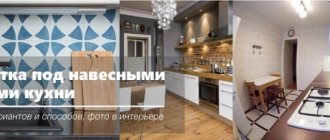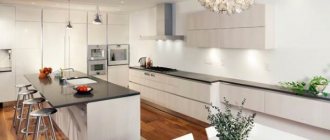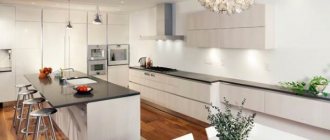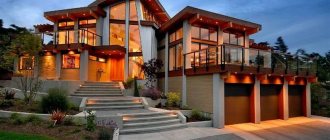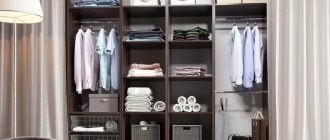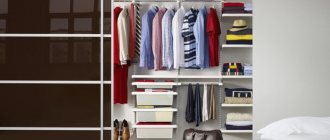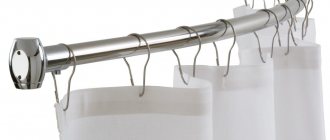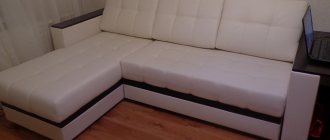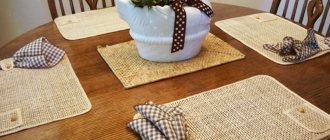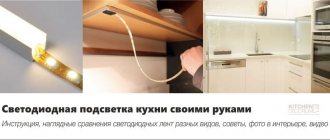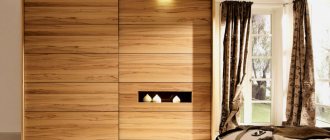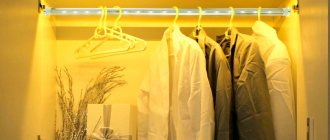Recommendations for lighting placement
A kitchen set is a complex complex of many elements. Some of its sections are illuminated for technical purposes, others for decorative purposes.
To create uniform lighting, use the following techniques.
Kitchen lighting for cabinets - panels, lamps, slots. It illuminates the countertop, stove surface, and washbasin. The hostess perfectly sees everything that happens on her table.
Illumination of individual zones - used more often in a small kitchen. Here it is enough to illuminate the stove, sink and, for example, the area with the microwave, so that you can see the surface of the countertop. However, the first task of such lighting is localization.
Lighting on the top of wall cabinets - usually on a specially installed panel. Allows you to do without overhead ceiling lighting and even at dusk to see the contents of the cabinets.
Interior lighting of drawers . Allows you to see their contents: utensils, cutlery, dishes, small appliances.
Under-table lighting is an expensive and rare option. LED strip or lamps are mounted on the reverse side of the panel and you get luminous tabletops. To realize this idea, you need to install a surface made of translucent material or glass.
Illumination of glazed facades helps to see the contents of wall cabinets, but behind the glass facade all objects are already clearly visible. Low warm lighting - golden, pinkish light - creates an amazing atmosphere of comfort.
Illumination of the lower part of the headset - mounted on a plinth. Makes massive floor cabinets look airy. It seems that the kitchen does not touch the floor and floats.
For decorative lighting, it is allowed to use colored LEDs or lampshades. However, this solution is rarely resorted to. White light is enough to create a visual impact.
Dining area lighting
The light near the dining table can be made in only two variations: a story sconce, one or several lamps on a long cord from the ceiling.
It is important to maintain the style
You can use the sconce if the table is near the wall. When choosing the location of a wall lamp, we are guided by two considerations: the degree of illumination and convenience. The lamp should not interfere, for which it is placed at a height of 60-80 cm above the tabletop. In order for it to illuminate the entire table, it is advisable to find a model that allows you to move the lamp away from the wall.
An example of the location of sconces above the dining table in the kitchen
To ensure that the lighting in the kitchen is not only bright, but also beautiful, all chandeliers and sconces are selected in the same style, which should also be in harmony with the overall design style.
Linear backlight
The headset is illuminated using a variety of lighting fixtures. Based on their appearance, all options are grouped into 2 categories: linear illumination and spot illumination. The first involves the use of models from several radiation sources that form a single whole.
Fluorescent Lamp
The option that is least suitable for the definition, since it is an independent lighting device. However, its appearance is unusual - a tubular fluorescent lamp up to 1 m long or more. Installed under the upper cabinets along the length of the kitchen corner.
Pros and cons of fluorescent lighting
Very high luminous efficiency, so such lamps are considered the most economical way of lighting
Generates diffuse light
Operates from 2 to 90 thousand hours
Easy installation - installed on brackets on the bottom of wall cabinets
Flickering - if there is no choke, the lamp flickers and causes discomfort
Unsafe – the device contains mercury, must be disposed of after use
Generates an uneven line spectrum that is unpleasant to the eye
Works unstably at low temperatures, but in the kitchen this drawback does not matter
Only low pressure lamps are installed indoors.
Regular tubular fluorescent lamps are not beautiful. Special furniture options are available for installation on furniture.
LED panels
The safest option of all lighting methods. The LED device does not heat up; light is emitted not due to heating, but due to the work of the semiconductor - the basis of the device. The semiconductor generates directional radiation, but several sources are installed in the panel, and the entire plane is covered with a lampshade. The result is very uniform soft lighting that does not irritate the eyes.
LED panels can be installed on any flat surface: tabletop, furniture frame or wall, or the bottom of wall cabinets.
Pros and cons of LED panels
Long service life
Lamps do not flicker and do not irritate the eyes
The body does not heat up, so it is possible to place the panels directly on the furniture wall, and not on brackets
In terms of efficiency, LED lamps are second only to fluorescent lamps
The LED generates light of a precisely defined color temperature: not only white daylight, but also colored
Installation of LED panels is possible with your own hands
The need to dispose of lamps after use
High price
To illuminate the kitchen corner, it is advisable to use panels based only on white LEDs. If the device also serves a decorative purpose, color models are installed.
LED lights
The most popular option, as it is the most convenient to use. LED kitchen cabinet lighting is a flexible strip on which diodes are attached. When turned on, the semiconductors generate light, creating a bright strip of light.
Double-sided tapes are chosen for the kitchen. The diode strip is protected by a transparent plastic layer. It is completely sealed and can withstand direct contact with water. This tape can be placed directly on the washbasin.
If the tape is used to illuminate the interior of cabinets, you can use single-sided ones. This tape is protected on one side and is not airtight, but it protects the devices from dampness and dirt.
Open tapes with low IP ratings cannot be used in the kitchen.
An adhesive layer is applied to the tape on the reverse side, so installation is reduced to gluing the product in any convenient place. The connection is made only through a transformer, since the LED backlight operates on a direct current of 12 V, and not on an alternating current of 220 V.
Pros and cons of LED strips
Economical - the backlight consumes 7 times less energy than an incandescent lamp
Easy to install
Decorative – LEDs generate light of any color
The need to install a transformer and strictly follow the connection diagram
General lighting in the kitchen
Now let's see how you can create general lighting in the kitchen. The traditional option is a chandelier. But it does not fit into every modern interior; nevertheless, it has its place.
Traditional general lighting - a chandelier in the middle of the ceiling
Often kitchens are not square, but rectangular in shape. In this case, you can find a chandelier that is elongated. For a long and narrow room, this is the best option that will provide optimal light distribution.
Install a long lamp in a narrow kitchen
If the ceilings are low, you won’t be able to hang a chandelier—it will get in the way. The solution is to find a lamp that is almost flat. It can be square or round - whichever suits the chosen kitchen design style best.
Recessed square lamp
If you are going to make a suspended or suspended ceiling, you can “scatter” spotlights over the surface or create some kind of pattern from them (read about ways to place spotlights and more here). You can also make lighting around the perimeter of the “central” zone. Such lighting in the kitchen visually helps to raise the ceiling and make the room a little more spacious.
The lighting can be made in a plasterboard ceiling or with a suspended ceiling
All these methods can be combined, so the number of options is very large. But it is important not to forget that there is also lighting for two other zones and to look for lighting fixtures for this area as well, because they must match in style.
Spot lighting
Spot lighting consists of small lighting fixtures, each of which is mounted separately. A row of lights above a table top is usually served by a single switch. The lighting of drawers or cabinets can be switched on separately. This is one of the biggest inconveniences when installing such lighting: the connection diagram is complex and requires laying a large number of cables. But this method allows you to place each lighting part exactly in the area where it is required.
Types of lamps
Illumination of wall cabinets is carried out using several types of lamps.
Built -in or mortise. Involves installing the housing into any surface. The cable is laid above the installation level. We don't see him. The body of the product is also hidden, only the lighting panel remains visible.
Overhead – the body remains visible, so the lamps themselves look more attractive. The device is fixed to any surface using brackets and glue. Can be stationary or rotary. The latter are more convenient, as they allow you to change the direction of the light.
The most convenient are overhead battery-powered lamps with Velcro for installation.
Types of lamps
A variety of lamps are used as lighting sources.
Halogen. They get very hot. They are only allowed to be placed on brackets and at a certain distance from the furniture.
Luminescent - economical, bright and very powerful, but they create an unpleasant flicker. With a short period of use, this drawback can be neglected.
LED – the biggest plus in this case is the size of the diode. The lamp can be really small in size and placed on any surface and even inside a box. LED devices do not heat up, emit uniform light at a strictly specified temperature and are only slightly less economical than fluorescent ones.
Advantages of using diode lamps
Modern types of lighting are superior in their parameters to outdated incandescent lamps, energy-saving lamps and other lighting devices.
Recommendations for illumination and light temperature
Kitchen lighting is included in the overall kitchen lighting project.
This refers to the illumination of the worktop and equipment, as well as the upper part of the set. Lighting for drawers or cabinets from the inside can be installed regardless of the lighting level in the room. The general requirement for a kitchen is 150 lux per square meter . The requirement is the same for the dining and working areas. To calculate the required lamp power, determine the illuminated area - usually the worktops and stove - and multiply the value by 150 lux.
The result is divided by the number of lamps that are supposed to be installed. Based on the results obtained, lamps of suitable power are selected.
You also need to take into account the temperature of the light . This indicator determines the shade. For functional lighting, warm white light with a temperature of 2700 K is recommended, natural daylight - 4200 K, and cold light - 6400 K.
Warm light is recommended for a large kitchen, cold light for a small one, as such lighting visually expands the space.
